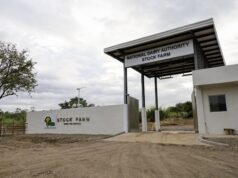BALANGA CITY – This province abounds with historical markers and monuments that depicted the sacrifices and bravery of Filipino soldiers along with their American counterparts during World War II especially in the few days before and after the peninsula “fell” to the Japanese invaders on April 9, 1942.
From Barangay Balsik in Hermosa, Bataan from the arc dividing Bataan and Pampanga, visitors cannot help but notice the various markers and monuments lining the MacArthur Highway to Mariveles and the Gov. J. Linao Road to Bagac.
At the boundary of Bataan and Pampanga in barangay Balsik, Hermosa, the first monument to be noticed is the Bataan and Democracy marker that marked the sad news that the peninsula had fallen in defense of democracy.
This is at Kilometer 72 Death March marker that shows that captive soldiers that started walking from Mariveles had travelled 72 kilometers.
There are 138 KM Death March markers with 100 in Bataan, 31 in Pampanga and seven in Tarlac.
The First Line of Defense that shows soldiers in fighting mood stands at the junction of Layac in Dinalupihan town.
The Filipino Soldier monument and the Pagbangon marker in Orani town and another monument of WWII soldiers in Abucay town depict the gallantry of Filipino soldiers despite all odds.
Two more than 100-year old trees, an acacia tree in Abucay and a Sampaloc tree in Pilar, were deaf-mute witnesses to the horrors of war and the dreaded Death March.
The Flaming Sword monument in Pilar shows the readiness of Filipinos, particularly the people of Bataan, to defend democracy at all cost.
Also in Pilar, are two KM Death March markers, the KM 26 and KM 41. The markers mean that captured soldiers had already hiked 26 kilometers from Bagac and 41 kilometers from Mariveles.
The Filipino – Japanese Friendship Tower in Bagac shows that even after intense fighting, two rivals can still be friends and forget the past.
The infamous Death March to Capas, Tarlac of about 70,000 soldiers, mostly Filipinos and some Americans, began in two points, one in Mariveles and another in Bagac after the United States Armed Forces in the Far East gave up Bataan some 77 years ago on April 9.
The Zero Kilometer (KM) Death March monument stands in Mariveles at the “Pinagsimulan ng Death March” spot where thousands of Filipino and American soldiers started on April 10, 1942 their 160-kilometer grueling march to Capas in Tarlac.
Another “0” KM Death March marker is located in Bagac town where another batch of surrendered Filipino and American soldiers began on April 11, 1942 their long walk to Capas.
The National Historical Commission placed at 70,000 the number of Filipino and American soldiers, members of the United States Armed Forces in the Far East, who became captives of the Japanese Imperial Army and forced to join the Death March after the fall of Bataan on April 9, 1942.
Thousands died on the way and while under incarceration in the Capas garrison.
There are still many other WWII markers and monuments in Bataan that must remind everyone that war is not a joke.
The Surrender Site Monument is located at the back of the Balanga Elementary School in Balanga City that was the former garrison of the Japanese Imperial Army.
From a distance, on top of Mt. Samat in Pilar, the giant War Memorial Cross can be seen. Heavy fighting took place in this mountain. A close look inside will show the War Memorial Shrine where the annual Araw ng Kagitingan rites every April 9 are held.




